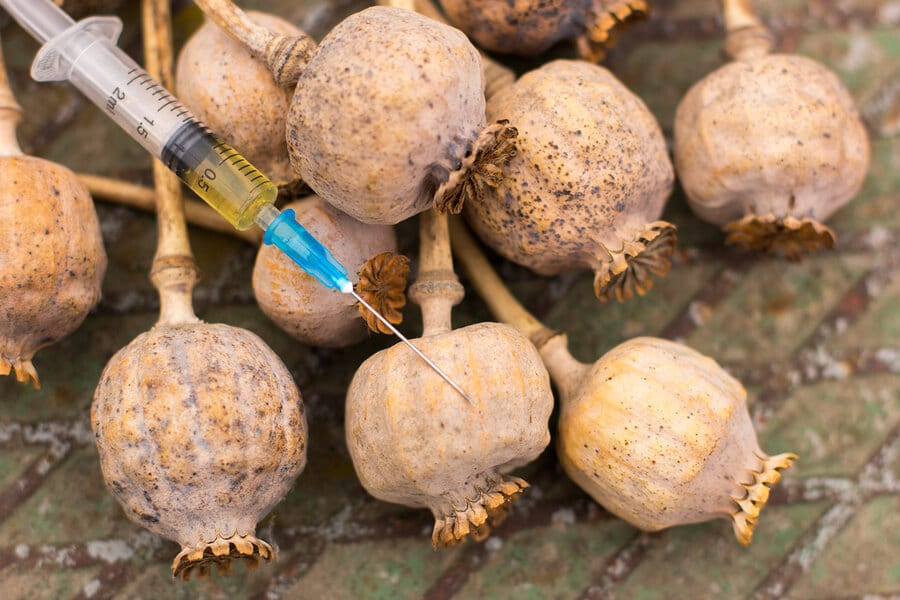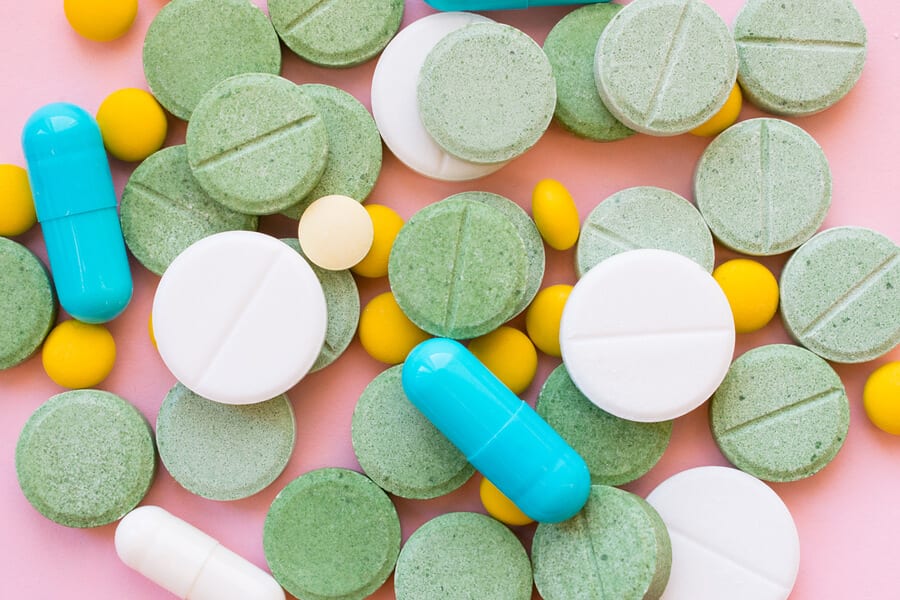
Opioid vs Opiate: Is There a Difference? – Opiates are natural, psychoactive compounds found in the opium poppy. These include morphine, codeine, and thebaine, and are commonly used for the treatment of pain and other health conditions. The term “opiate” may also sometimes refer to semi-synthetic substances derived from these natural substances, such as heroin. Opioids, comparatively, are any substances that act on opioid receptors in the body. The term “opioids” is often used to describe both prescription and illicit drugs, including those that are partially derived from opiates, such as oxycodone, and those that are fully synthetic, such as fentanyl.
Because of the confusion involving the two terms and their non-standardized use, the term “opiate” is rapidly becoming obsolete, in favor of using “opioid” to describe all of these drugs. With little reason to differentiate between natural, semi-synthetic, and synthetic opioids, the term “opioid” is most often used, even by health providers, in reference to the complete range of similar-acting substances. Moreover, there is a difference between the two, chemically, but it is okay to say “opioid” whether it is natural or not. Substances that are derived from opium alkaloids and are very chemically similar (e.g., heroin) are often considered to be both opioids and opiates. Conversely, other substances that are chemically different from opium alkaloids, but which still act on the opioid receptors (e.g., fentanyl) are considered to be opioids but not opiates.
Opiate Defined
Opiates are chemicals culled from the poppy plant, Papaver somniferum. Humans have cultivated these plants for thousands of years to produce opium, which has medicinal properties, including as a treatment for pain, as a cough suppressant, an anti-diarrheal, and to induce sleep. In addition to these effects, opium can also generate intense feelings of well-being, which is the primary reason why opiates and opioids are so addictive.
Opium alkaloids, the chemicals that are responsible for these medicinal and recreational effects, are often referred to as “opiates.” Opium alkaloids can be used as stand-alone drugs or in the synthesis of other compounds and include the following:
Morphine
Morphine is the most abundant alkaloid found in opium and is also the compound that has been used most often for medical purposes. Morphine is frequently administered to manage pain but is also a critical component in deriving a number of semi-synthetic medications, such as hydromorphone. Heroin also comes from morphine but is much more potent.
Codeine
Codeine is another important opium alkaloid that is used as a medicinal compound and to derive semi-synthetic substances. In addition to the treatment of pain, codeine is also found in some prescription cough syrups.
Thebaine
Thebaine is the most virulent of the opium alkaloids, but it is used in the manufacture of popular semi-synthetic painkilling medications, such as oxycodone and hydrocodone.
Opioid Defined

An opioid is any substance that can be consumed, snorted, inhaled, or injected that acts on opioid receptors in the body. Opioid receptors are proteins that can be found in the brain, spinal cord, and digestive tract, and also interact with compounds the body makes naturally, known as endogenous opioids. In addition to heroin, semi-synthetic opioids include prescription medications such as the following:
- Oxymorphone (Opana)
- Hydrocodone (Vicodin, Lortab, Lorcet)
- Oxycodone (OxyContin, Oxecta, Roxicodone)
- Hydromorphone (Dilaudid, Exalgo)
Fully synthetic opioids include prescription medications such as the following:
- Fentanyl (Abstral, Actiq, Fentora, Duragesic, Lazanda, Subsys)
- Methadone (Methadose, Dolophine)
- Meperidine (Demerol)
- Tramadol (ConZip, Ryzolt, Ultram)
Drugs classified as opioids also include medications that work on opioid receptors but in an antagonistic way. Opioid agonists, such as the aforementioned, activate the receptors to produce therapeutic and euphoric effects. Opioid antagonists, on the other hand, bind to the receptors but do not activate them, thereby blocking the action of agonist opioids. Such opioids are used to treat opioid overdoses (e.g., naloxone) and to help recovering addicts resist the urge to relapse. They include naltrexone (Vivitrol), naloxone (Narcan) and buprenorphine (Butrans, Buprenex, Probuphine). Suboxone is a combination drug frequently prescribed to reduce cravings and withdrawal symptoms and includes a combination of naloxone and buprenorphine.
Narcotics Defined
The term “narcotic” has historically been used in reference to a number of psychoactive substances. Today, the Drug Enforcement Administration (DEA) more explicitly defines narcotic drugs as those that alleviate pain and dull the senses, characteristics most commonly associated with opiate and opioid drugs. Naturally occurring opiates, semi-synthetic, and synthetic and opioids are considered to be narcotics, which include both legally prescribed and illicit variations. Below is a list of the most commonly used narcotics and opioids drugs:
- Opium
- Heroin
- Codeine
- Oxycodone
- Hydrocodone
- Tramadol
- Morphine
- Hydromorphone
- Fentanyl
- Carfentanil
Opioid vs Opiate vs Narcotics
What is important is that regardless of the distinction or word usage, any opioid or opiate has the potential to treat pain and other medical conditions, but are also frequently abused and can cause dependence. And although some people use the term “narcotic” more broadly, it most accurately refers to opioids and not other types of drugs.
Opioid Dependence and Withdrawal
All opioids and opiates carry some potential for tolerance and dependence. Generally speaking, stronger opioids, especially if they are snorted, smoked, or injected, are more dangerous in this regard than weaker ones, but all can become habit-forming. Over time, repeated exposure to these drugs can produce tolerance, a condition in which the user needs to administer increasing amounts of the drug to achieve the desired effect. Closely related is dependence, a condition that occurs when a person is forced to the drug to prevent unpleasant withdrawal symptoms and mitigate cravings. The length of time it takes to become physically dependent on these substances varies with each person, and also depends on the drug itself, the usual method of administration, and the average amount and frequency it is being used. Moreover, when the person discontinues using the drugs, the body needs time to recover and reestablish a balance. During this time, withdrawal symptoms manifest, usually within a few hours, and can last several days. Withdrawal from opioids can occur any time prolonged use is stopped or significantly reduced.
Opioid Withdrawal Symptoms
Opioid withdrawal symptoms are very uncomfortable but are usually not life-threatening.

Early symptoms of withdrawal include:
- Agitation
- Anxiety
- Muscle aches
- Increased tearing
- Insomnia
- Runny nose
- Sweating
- Yawning
Late symptoms of withdrawal include:
- Abdominal cramping
- Diarrhea
- Goosebumps
- Nausea and vomiting
Opioid Overdose
Taking excessive amounts of an opioid or combining it with other drugs or alcohol can result in a life-threatening overdose. If you suspect someone is experiencing an overdose, call 911 immediately. Symptoms of an opioid overdose include the following:
- Confusion, delirium, or acting drunk
- Frequent vomiting
- Breathing problems, such as slowed or labored breathing
- Excessive sleepiness, or the inability to wake up
- Periodic loss of consciousness
- Respiratory arrest
- Cold, clammy skin, or bluish skin (cyanosis) around the lips or under the fingernails
Depressed breathing is the most dangerous effect of opioid overdose. Lack of oxygen to the brain can not only lead to irreversible neurological damage but may also be accompanied by the failure of other organ systems, such as the heart and kidneys.
Treatment for Opiate or Opioid Addiction
Addiction to opioids or opiates can be successfully treated managed as a chronic illness through the use of residential or outpatient treatment, ongoing therapy, group and family support, lifestyle changes, and for some people, medication. Our center offers these evidence-based services, delivered by caring medical professionals with compassion and expertise. We provide clients with the support and resources they so desperately need to achieve abstinence and sustain long-lasting sobriety and wellness. You can once again be happy and experience life to its fullest, free of drug and alcohol! Call us today to find out how! Related: Why Is Heroin So Addictive?
I luv my dope high dispight my death’s
I think if it was perfected it’s worth it
It cures all kinds of pains that are unberible
I also feel it should get decriminalized becuz they are all medical but
I’ll weight for u to upgrade 2 me to agree now or later it will be legalized soo stop taking me to jail over medicine …